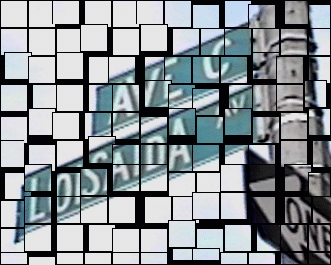BY LESLEY SUSSMAN | Preservationists who want to see a large chunk of the Lower East Side and East Village designated as historic districts and religious leaders who oppose being told what to do with their houses of worship, laid out their arguments before the Landmarks Preservation Commission Tuesday in a contentious, jam-packed hearing.
It was the pro-preservation forces, however, who seemed to gain the upper hand at the 3:30 p.m. hearing, filling the ninth-floor hearing room at One Centre St. with a large number of supporters, many wearing stickers that read, “Preserve the East Village, Landmark Now.”
The 11 L.P.C. commissioners held the public hearing to gather feedback on a proposed 330-building district that would stretch zigzag fashion in a 15-block area from St. Marks Place to Second St. and from Avenue A almost to the Bowery.
A final vote by the commission isn’t expected for months to come. However, if the historic landmark designation goes into effect, it would lend protections to hundreds of historic buildings, including cultural icons like the La MaMa Theater, the former Fillmore East building and the Anthology Film Archives, as well as several houses of worship.
Currently, the only other historic districts in the neighborhood are a small enclave around St. Mark’s Church-in-the Bowery that was approved in 1979 — that includes buildings on Stuyvesant and E. Tenth Sts. — and, designated this January, one block of 26 quaint row houses and tenements along E. 10th St. between Avenues A and B on the north edge of Tompkins Square Park.
In the first hour and a half of the nearly three-hour hearing, roughly 80 speakers — mostly preservationists — had their say. Also testifying in favor of the historic landmark designation were representatives of City Councilmember Rosie Mendez, state Senator Daniel Squadron, Manhattan Borough President Scott Stringer and state Senator Tom Duane.
A spokesperson for Assemblymember Deborah Glick told Landmarks Commission Chairperson Robert Tierney that the assemblymember was “in full support of landmarking. We are only scratching the surface of what we need to do to preserve the existing historic character of the Lower East Side and East Village,” she said.
Carolyn Ratcliffe, a member of a Community Board 3 subcommittee dealing with historic landmarking, said the community board was basically in support of the historic district designation.
However, she added, “We also want the commissioners to take into consideration the concerns of the religious organizations who are opposed to this and work together with them.”
Andrew Berman, executive director of the Greenwich Village Society for Historic Preservation, an organization advocating for the historic district’s creation, stressed the importance of protecting the area as a symbol of the city’s mercantile history and to honor the waves of immigrants that have called the neighborhood home.
Berman also emphasized the East Village’s more recent bohemian past when the neighborhood nurtured artists, painters, writers and musicians in the late 20th century.
“This is one of the most historically significant neighborhoods in the city of New York,” he said. “But despite that, the East Village and Lower East Side is surprisingly lacking in landmark protection.”
Among the handful of speakers opposed to a historic landmark designation for the neighborhood was Father Christopher Calin, dean and chief executive officer in residence of the Russian Orthodox Cathedral of the Holy Virgin Protection, 59 E. Second St.
The priest angrily told the commissioners that his church opposes “the forced landmark designation.”
“Landmark designation would require government approval for any alternation affecting the exterior of the designated property, effectively transferring authority from the cathedral to the civil authority,” he protested. “Thus, the civil government would dictate the religious freedoms of the church, a violation of the Establishment Clause of the First Amendment.”
Also speaking out against the proposed historic landmark plan was Anthony Donovan, a member of a local interfaith organization who said he was only speaking for himself as a local resident
“It’s simple,” Donovan said. “If you are imposing these regulations upon others, then you pay the extra costs.”
Donovan was referring to a grant program operated by L.P.C. that provides from $5,000 to $50,000 for restoration work to eligible owners of landmarked buildings, according to Elisabeth de Bourbon, the commission’s spokesperson. However, funding is not guaranteed.
Donovan also noted that religious organizations could not afford the public-relations efforts being mounted by many preservation groups, such as G.V.S.H.P, which has been sending out press releases on the proposed historic district and which handed out orange-and-blue stickers to supporters at the hearing.
Meanwhile, local architect Leo Blackman said local religious institutions’ fears “are not founded in fact.” He said that several churches have been demolished in recent years to make way for new developments, such as St Ann’s on E. 12th St., which was replaced by an N.Y.U. student dorm.
“We learned that religious leaders cannot be trusted to protect their patrimony for all of us,” Blackman said.
Tierney, meanwhile, said there was no timeline yet for a final decision about the East Village-Lower East Side Historic District. The hearing did not end with a vote by L.P.C., and a date for a future vote or additional hearings has not been set.


















